Supporting Key Assays for Large Molecule Discovery & Development
Today, large molecules are one of the fastest growing and most exciting modalities in drug discovery, promising more targeted and highly personalized therapy. Large molecule discovery and development involves multiple stages of engineering and molecule optimization, all of which require a range of targeted and functional assays for molecule assessment. In addition to many standard assays used across pharma discovery, Genedata Screener supports several assays key to the large molecule discovery workflow, such as plate-based immunoassays and cellular assays, high throughput flow cytometry, epitope binning, and biophysical assays including SPR and BLI. Furthermore, Genedata Screener seamlessly exchanges information with Genedata Biologics®, a unified system for managing and tracking biologics discovery workflows.
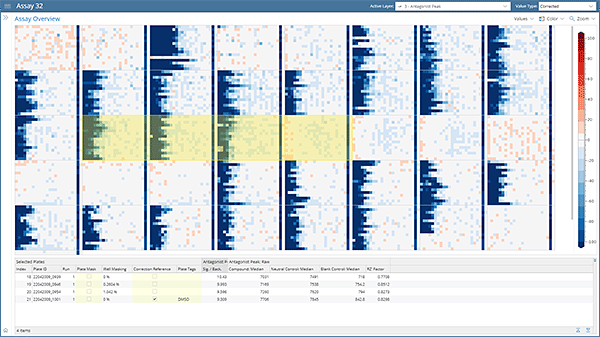
Immunoassays & Cellular Assays
Plate-based immunoassays including ELISAs are essential tools for large-molecule research, from hybridoma screening and titer quantification all the way to pharmacokinetic characterization. Also important are cell-based assays, including cytotoxicity assays (CDC, ADCC, CMC, TDCC), proliferation, and internalization assays, which are commonly used for functional screening and characterization of large molecules. With Genedata Screener, you can:
- Automate and standardize routine calculations, such as normalizations, standard curve quantification, or dose-response curve fitting.
- Save time by eliminating complicated workflows that require many tools and associated reformatting steps done manually.
- Reduce risk by eliminating errors caused by manual processing.
- Analyze multiplexed immunoassays, such as those performed by mirrorball® instruments, and visualize results in a plate-based context to rapidly identify potential artifacts.
- For image-based assays, view original images and calculated results side-by-side, for instant confirmation of phenotypic changes and biological events (more information on Genedata Screener for HCS and Genedata Imagence).
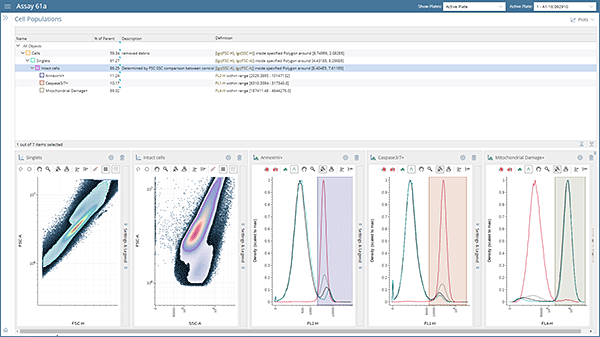
High Throughput Flow Cytometry
Flow cytometry and FACS—critical tools for large molecule discovery—have drastically increased sample throughput and enabled multiplexed experiments. Today, high throughput flow cytometry (HT-Flow) campaigns can track multiple features for thousands of single cells per treatment condition, across many samples, requiring a scalable analysis solution that simplifies review of complex results.
Genedata Screener supports automated, standardized analysis of complete HT-Flow campaigns. Genedata Screener for HT-Flow reads and compensates data directly from HT-Flow instruments.
By using Genedata Screener for flow cytometry experiments, you can:
- Instantly access results at all resolution levels, from single cells to well and plates, for easy comparison and interrogation.
- Perform population gating with interactive histograms and density plots; conduct other key flow cytometry analyses such as data aggregation and result calculation on selected cell subpopulations.
- Adjust processing settings and instantly re-process entire campaigns.
Read this poster to learn how Genedata Screener® accelerates the efficiency of flow cytometry data analysis.
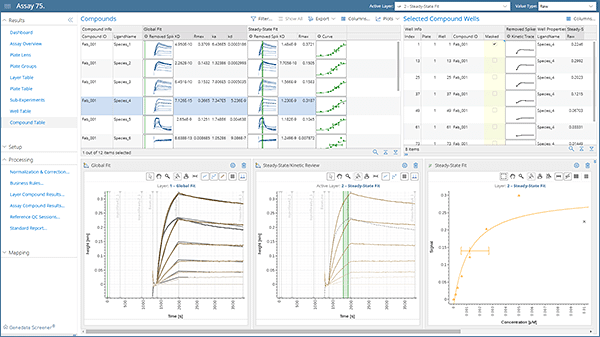
SPR & BLI
Surface plasmon resonance (SPR) and bio-layer interferometry (BLI) are key methods for measurement of large molecule target-binding affinity, kinetics, or epitope specificity.
These technologies, however, are served by diverse instruments offering disparate analysis methods, requiring manual step-by-step processing, or lacking batch-analysis for multiple plates. Often, scientists must export data to downstream analysis programs, only to return to instrument software to adjust parameters, re-export, and re-run the entire workflow again.
Using Genedata Screener for SPR or BLI in the characterization or screening of large molecules enables you to:
- Analyze biophysical screening data from diverse instruments used for large molecule research such as the Octet® (ForteBio) Platform, all on a single system—eliminating the need to toggle between multiple analysis and instrument software.
- Automatically apply standard methods to full screening runs.
- View raw time-series data alongside key results, easily compare them across plates and runs, and make analysis adjustments with minimal effort.
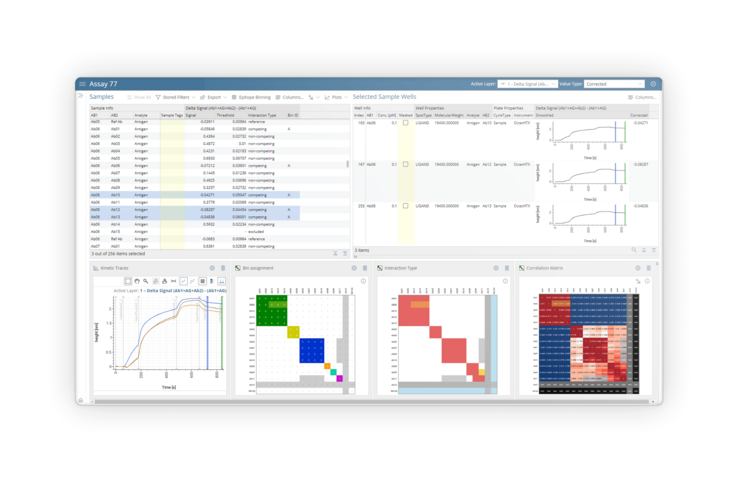
Epitope Binning
Sorting lead antibody molecules into epitope bins can greatly enhance the effectiveness of a large-molecule campaign as it increases lead diversity and engineering opportunities down the line. This advantage is further multiplied if epitope binning is expanded and moved to earlier stages of discovery. Genedata Screener enables such scaling by allowing you to:
- Rapidly perform SPR/BLI-based epitope binning independent of the instrument type with full automation from the raw data to the final bin assignment.
- Generate high-quality, accurate binning by eliminating errors from old, copy-paste spreadsheet workflows.
- View raw spectrograms right alongside your final binning results from SPR and BLI-based epitope binning for easy result interpretation and quality control.
- Visualize epitope bins and interactively use these visualizations to rapidly adjust binning as needed.
Large-molecule discovery groups at Amgen have used our solution to scale their epitope binning.
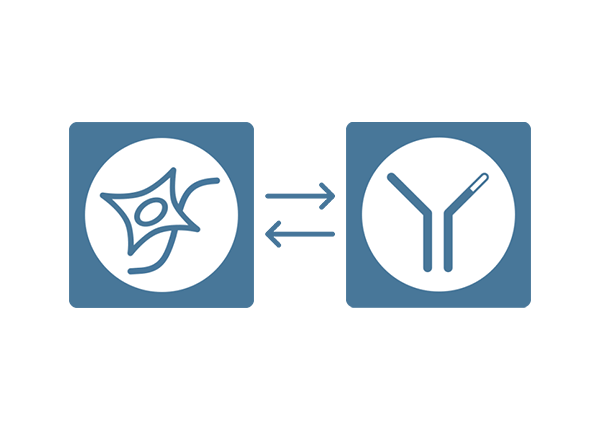
Tailored Workflow Integration
Your unique discovery platform is what gives you an edge, and every company has a different way of doing things. We will work closely with you to integrate with your unique process, including with workflow management platforms.
For example, at multiple customers, we've successfully integrated with Genedata Biologics, which manages every step of biologics discovery and development. These integrations allow them to:
- Directly import plate maps and molecule annotations, for efficient and error-free information transfer
- Report numerical results and plots directly into Genedata Biologics, where colleagues and collaborators can connect them to overall molecular ancestry and project history
- Link back to and drill down into raw data and analysis in Genedata Screener, ensuring that original processing steps are traceable and transparent